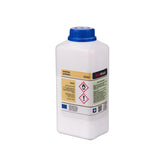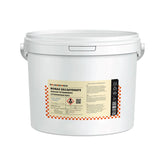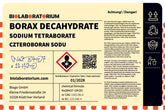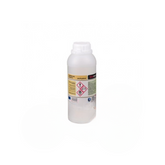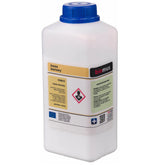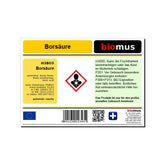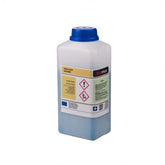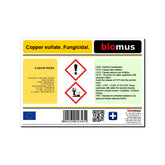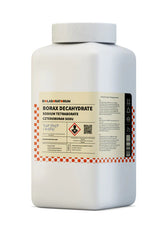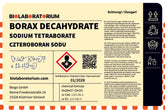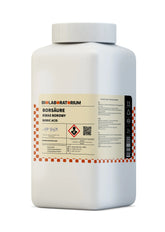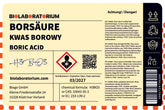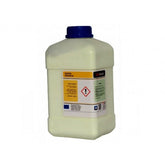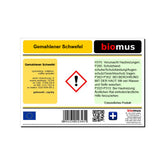Fluorescein – Properties, Laboratory Applications, and Safety
Fluorescein is a versatile and useful dye used in a wide range of applications. As a chemical indicator and tracer, it is widely used in science and technology. In this article, we take a closer look at the properties, applications, and safety aspects of fluorescein.
What is Fluorescein?
Fluorescein is an organic dye with the chemical formula C₂₀H₁₂O₅. It is a yellow-orange solid that is well soluble in water and other polar solvents. The characteristic feature of fluorescein is its intense fluorescence, which occurs when excited by light in the blue or ultraviolet wavelength range.
The fluorescence emission of fluorescein lies in the green-yellow spectral range and is very efficient – up to 90% of the absorbed light energy is converted into fluorescence light. This property makes fluorescein an extremely useful marker and indicator in many applications.
Properties and Structure of Fluorescein
Fluorescein has a complex aromatic structure with a central xanthene dye backbone. This backbone is substituted with two phenyl rings and a carboxy group. The carboxy group can be protonated or deprotonated depending on the pH, which affects the color and fluorescence properties.
In acidic solutions (pH < 5), fluorescein is predominantly in its protonated, non-fluorescent form. As the pH increases, deprotonation increases, leading to a red shift and enhancement of fluorescence. The fluorescence maximum at neutral pH is around 520 nm.
In addition to pH, other factors such as temperature, solvent, and the presence of heavy metal ions also influence the fluorescence properties of fluorescein. This sensitivity to environmental factors makes fluorescein a useful indicator and tracer in many applications.
Laboratory Applications of Fluorescein
Due to its excellent fluorescence properties, fluorescein is widely used in science and technology. Some important application areas are:
Microscopy and Imaging
Fluorescein is a widely used fluorescent dye in microscopy. It is used to make biological structures, cells, or tissues visible. By coupling to specific antibodies or ligands, fluorescein can be specifically bound to biomolecules to study their localization and distribution.
Medical Diagnostics
In ophthalmology, fluorescein is used to examine the interior of the eye (fundoscopy) and to detect corneal damage. Fluorescein is also used in angiography to make blood vessels visible.
Environmental Analysis
Fluorescein serves as a tracer in hydrogeology to track flow paths and patterns of groundwater. Fluorescein can also be used in water analysis to detect pollution or leaks.
Material Testing
Fluorescein is used in non-destructive material testing to make cracks, pores, or leaks in surfaces visible. For this purpose, the dye is applied to the surface to be examined.
Biochemistry and Molecular Biology
In biochemistry and molecular biology, fluorescein serves as a labeling dye for proteins, nucleic acids, and other biomolecules. These fluorescence-labeled biomolecules can then be detected and quantified using fluorescence-based methods such as ELISA or flow cytometry.
Safety aspects of fluorescein
Although fluorescein is considered relatively harmless in many applications, some safety aspects must be considered during handling and disposal:
- Fluorescein is harmful if swallowed. Therefore, it should not be taken into the mouth or eaten.
- In higher concentrations, fluorescein can irritate the skin and mucous membranes. Thorough washing is required upon contact.
- Fluorescein solutions can stain plastics, rubber, and other materials. Caution is advised when in contact with sensitive surfaces.
- Fluorescein waste must be disposed of as special waste and must not enter the sewage system.
- When working with fluorescein, wearing protective equipment such as lab coats, gloves, and safety glasses is recommended.
Overall, with proper handling and adherence to safety regulations, fluorescein is a useful and safe dye for many applications in science and technology.
Conclusion
Fluorescein is a versatile and powerful dye with excellent fluorescence properties. Its applications range from microscopy and medical diagnostics to material testing and environmental analysis. Due to its sensitivity to environmental factors such as pH and temperature, fluorescein is also suitable as a chemical indicator.
However, some safety aspects must be considered when handling and disposing of fluorescein. With the proper protective measures, fluorescein is a useful and safe tool in many laboratories and technical applications.
